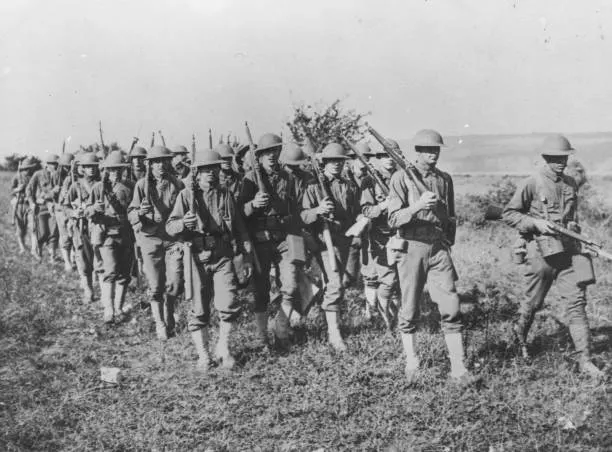Why Did America Enter World War I? Key Reasons & Timeline
Published: 17 October 2025
By Matthew
via the Smart.DHgate website

americans-troop-in-france-during-ww-i
Introduction
Understanding why did America fight in World War 1 involves examining the historical backdrop and pivotal moments that shifted the U.S. from neutrality to active engagement. Initially, the United States maintained a stance of isolation, focusing on internal growth and avoiding entanglement in Europe’s escalating conflicts. However, a blend of economic interests, political pressures, and technological developments gradually altered this position. America’s entry in April 1917 marked a crucial turning point in the global conflict, influenced by specific provocations and strategic calculations. According to the Office of the Historian, these influences culminated in formal declarations and mobilization that reshaped the war’s trajectory, reflecting the U.S.’s emerging role on the world stage.
Reasons/Explanations
Several critical reasons explain the causes of US entry into WW1. Firstly, Germany’s policy of unrestricted submarine warfare directly threatened American vessels, risking lives and commerce. This aggressive naval tactic undermined neutral ship safety, escalating tensions. Secondly, the infamous Zimmermann Telegram exposed Germany’s proposal for a military alliance with Mexico, promising territorial gains at America’s expense. This intercepted message galvanized public opinion and congressional support for war. Thirdly, strong economic ties and investments in Allied nations like Britain and France linked America’s prosperity to their success, incentivizing intervention. Additionally, growing public sentiment, influenced by propaganda and a moral imperative to support democracy, further pressured officials. Lastly, protecting American interests and maintaining the balance of power in Europe were strategic imperatives. These factors collectively fueled momentum towards war, clarified well by the National WWI Museum and Memorial.
Tech Insights (Matthew)
The technological landscape of World War 1 played a significant role in the conflict’s escalation and America’s decision to join. The evolution of unrestricted submarine warfare demonstrated rapid advancements in naval technology, allowing Germany to threaten not only military but also civilian and neutral shipping with devastating effect. This warfare method tested the limits of maritime security and showcased the strategic importance of controlling sea lanes. Moreover, the interception and decoding of the Zimmermann Telegram highlight early signals intelligence breakthroughs and the vulnerabilities inherent in wartime communications. This coded message’s revelation underscored the growing sophistication and risks of diplomatic exchanges in wartime. The intersection of communication technologies and military innovation reveals how technological variance influenced diplomatic relations and ultimately spurred America’s entry. According to Wikipedia’s detailed record, these factors contributed to an environment where measured technological assessments guided strategic decisions.
Practical Fixes/Tips
Reflection on history suggests several diplomatic and communication approaches to prevent future conflicts similar to World War 1. International relations benefit from transparency, open dialogue, and robust communication channels to identify and resolve tensions early. Maintaining a balanced power dynamic requires cooperation through treaties and multilateral agreements that deter unilateral military escalations. Conflict prevention also depends on investing in secure and reliable communication technologies to avoid misunderstandings like those that the Zimmermann Telegram incident exposed. Diplomatic solutions focus on balancing national interests with global stability, promoting conflict resolution frameworks and engaging in regular dialogue between powers. In sum, lessons from America’s entry underscore the importance of proactive diplomacy and the strategic management of communication vulnerabilities to avoid war’s devastating consequences.
→ Read the entire article on the Smart.DHgate website.
External Web Site Notice: This page contains information directly presented from an external source. The terms and conditions of this page may not be the same as those of this website. Click here to read the full disclaimer notice for external web sites. Thank you.



